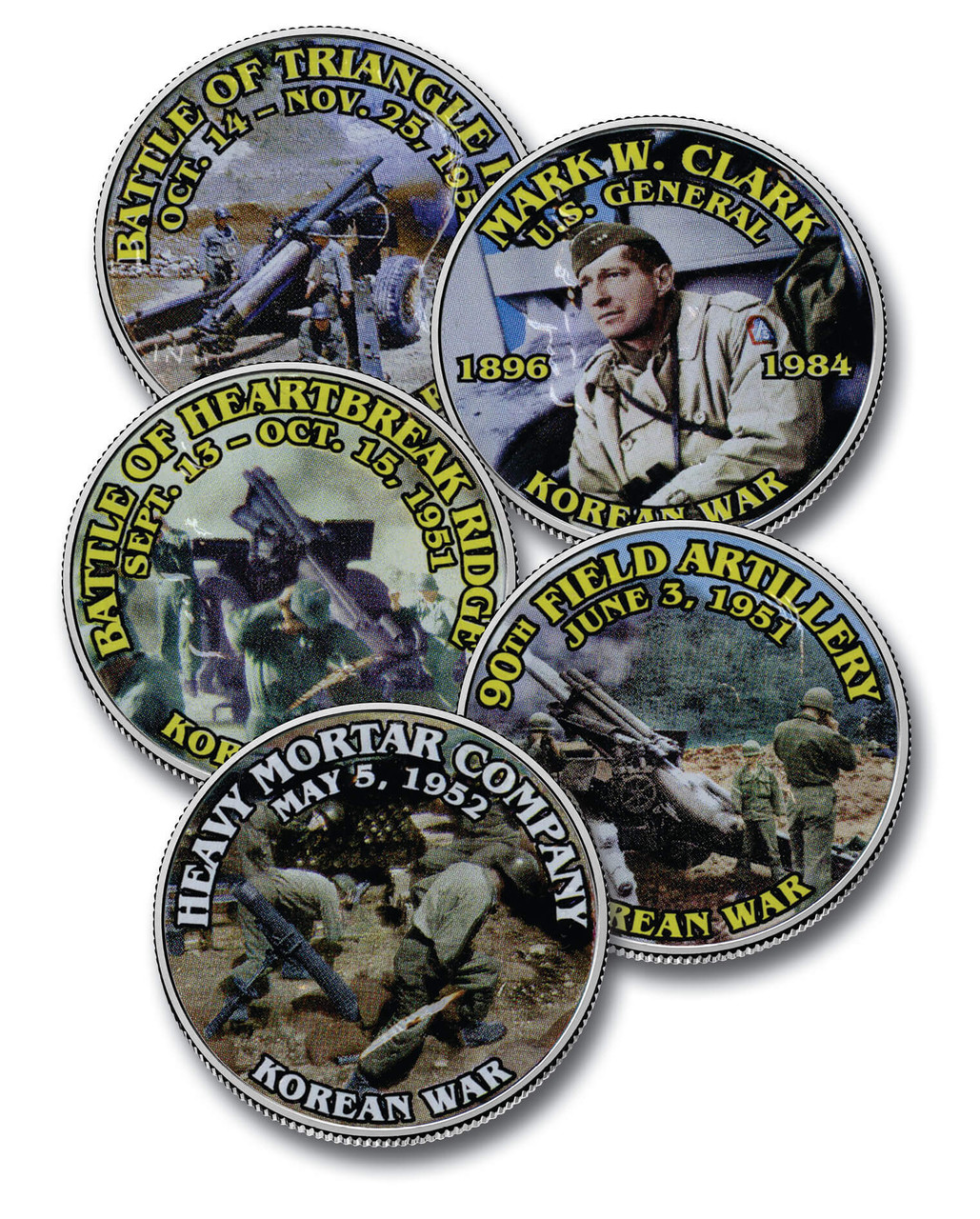
Get 5 Mystic-Exclusive Coins
Honoring the Korean War
This is your chance to own five US half dollars imprinted with dramatic images from the Korean War. You'll receive coins picturing the Battle of Triangle Hill, Mark. W. Clark, Battle of Heartbreak Ridge, 90th Field Artillery, and a Heavy Mortar Company. They're all windows into this turbulent era in US and... more
Get 5 Mystic-Exclusive Coins
Honoring the Korean War
This is your chance to own five US half dollars imprinted with dramatic images from the Korean War. You'll receive coins picturing the Battle of Triangle Hill, Mark. W. Clark, Battle of Heartbreak Ridge, 90th Field Artillery, and a Heavy Mortar Company. They're all windows into this turbulent era in US and world history.
Plus, all the coins are on John F. Kennedy US half dollars, a nice large size that makes it easy to see all the details of each design. Order yours now.
About the Coin Subjects:
Battle of Triangle Hill - The Battle of Triangle Hill was fought between October and November of 1952 during the Korean War. It was a major clash between UN forces (mainly US and South Korean troops) and Chinese People's Volunteer Army units. Despite massive artillery and air support, UN forces were unable to secure the heavily fortified Chinese positions, resulting in high casualties on both sides. The battle was an example of the brutal stalemate of the war's later phase.
Mark W. Clark - During the Korean War, General Mark W. Clark served as the Commander of UN forces, leading the US and allied troops on the side of South Korea against North Korean and Chinese forces. He played a key role in negotiating the armistice that ended active combat in 1953, though he expressed frustration at not achieving a decisive military victory. After the war, Clark became president of The Citadel, a military college in South Carolina.
Battle of Heartbreak Ridge - The Battle of Heartbreak Ridge was fought from September 13 to October 15, 1951. It was fought between UN forces (mainly US and French troops) and North Korean and Chinese forces in the rugged mountains of North Korea. The battle involved intense infantry fighting, artillery barrages, and tank assaults, ultimately resulting in a hard-won UN victory with heavy casualties on both sides. The battle highlighted the difficulty of achieving territorial gains and led to a shift in US strategy toward limited war and increased armistice negotiations.
90th Field Artillery - The 90th Field Artillery Battalion was a segregated African American unit during the Korean War. It provided critical artillery support for US and UN forces. The battalion was composed largely of Black soldiers under white officers and demonstrated exceptional performance in major battles, including defense of the Pusan Perimeter and Inchon Landing. The success of this battalion influenced the US military's eventual move toward desegregation of troops.
Heavy Mortar Company - Heavy mortar companies provided indirect fire support during the Korean War. They used 4.2-inch mortars to target enemy positions with high-explosive and smoke rounds. These units were composed of specialized infantry and artillery personnel, often operating under harsh and dangerous conditions to support front-line troops. Their effectiveness in suppressing enemy forces and disrupting attacks were a huge help to UN defensive and offensive operations throughout the war.












